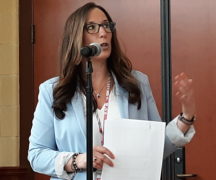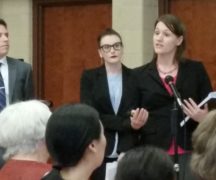By JAN LARSON McLAUGHLIN
BG Independent News
Bowling Green Board of Education voted Tuesday evening to put a $40 million issue on the November ballot to pay for the construction of a single community elementary school.
For those voters who mistake this as the same issue that failed twice before, the board stressed that is not so. This issue is for $40 million – rather than $72 million. This bond will be for 30 years – rather than 37 years. This tax will be split so half is paid with traditional income tax and half with property tax – rather than all property tax. And the district will apply for state Expedited Local Partnership Program this time around.
But for those voters who think the single community elementary school has been floated before, they would be correct.
Before listening to citizen comments at Tuesday’s meeting, most of the board members were leaning toward a bond issue for three separate elementary schools. But speaker after speaker asked the board to do what is right for students – and try the consolidated school with this new funding structure.
Board members Ginny Stewart, Bill Clifford, Jill Carr and Norm Geer agreed. Board member Paul Walker voted no – not because he believes the three schools are better for students – but because he fears the community won’t support just one school.
The audience at Tuesday’s meeting gave the board a standing ovation after the vote to put the issue on this fall’s ballot.
After the last two failures of the building issue, the board formed two task forces made up of community volunteers.
By voting on the funding for the facilities, the board followed the recommendation of the finance task force that worked seven months to come up with the compromise on how to best fund the building issue.
By voting to use the funding to build one community elementary, the board took the recommendation of facilities task force members when they voted in January on which building option they preferred. At that meeting, 61 percent of the members voiced support for a consolidated elementary.
That recommendation, however, was not presented to the school board as the final decision of the facilities task force. Instead, the task force was asked in March to vote based on which school proposal they felt the community would support. That vote was for three separate elementary schools.
But on Tuesday, several members of the facilities task force spoke before the board, voicing their frustration that their recommendation was based on their guesses about community support – not on their own feelings about what is best for the students of the district.
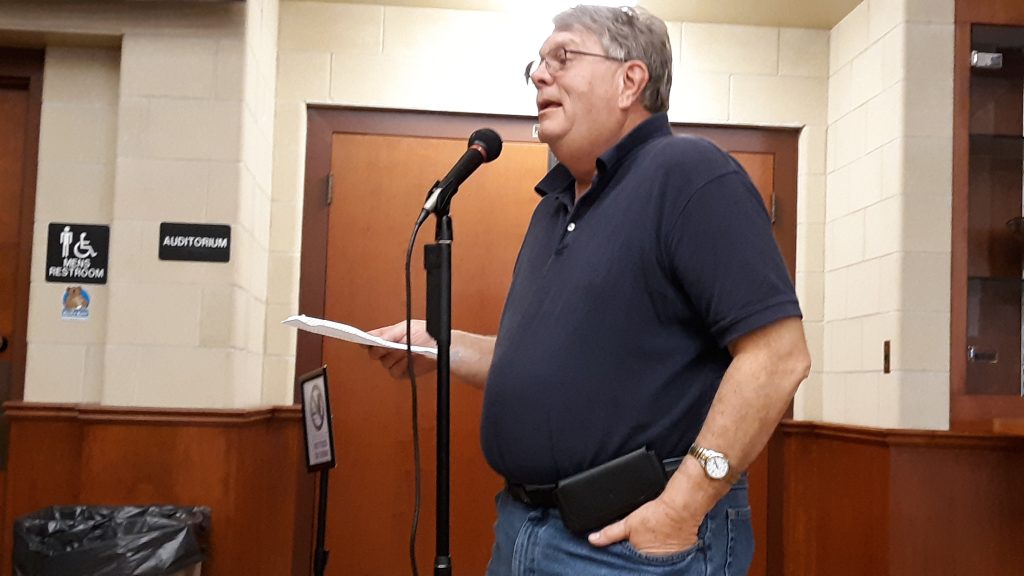
Ken Rieman, a member of both task forces, shared his feelings after touring Bowling Green’s schools and other newer schools.
“There is no doubt the current Bowling Green facilities are substandard,” he said.
A single community elementary school is the best educational and financial solution for the district, Rieman said.
“I’d like the opportunity to vote on the best option,” he said.
Tracy Hovest, also a member of both task forces, thanked the board for giving citizens a chance to serve in the groups, and for spending many Saturdays meeting as a board to find a solution.
Hovest, a teacher in another district, said she could enroll her daughter in the district where she works, or could afford to send her to another district. But she believes in BG schools.
“I’ve always had a choice,” Hovest said. “I will choose BG every single time. The teachers here, the programs here have only enriched our lives.”
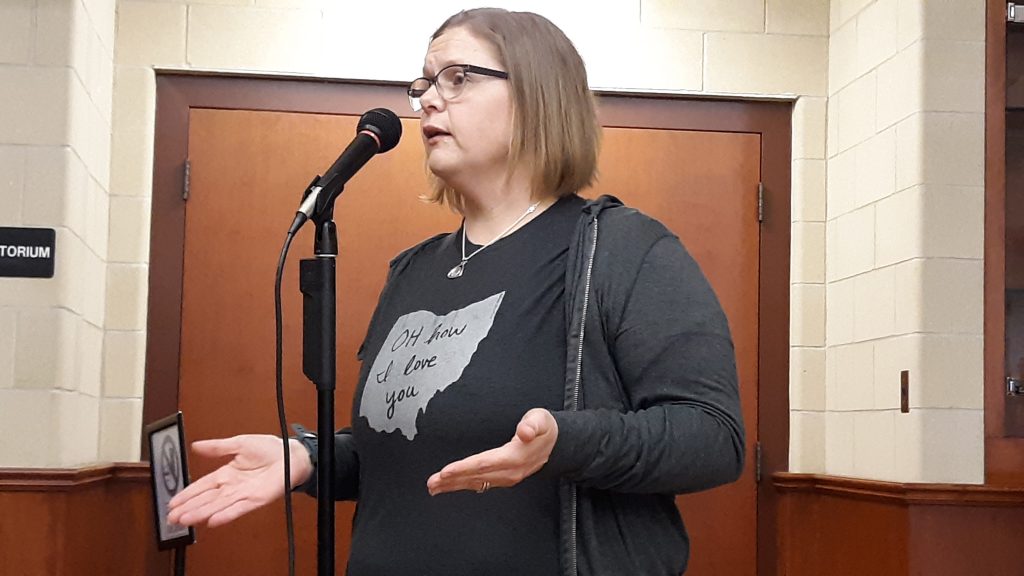
Superintendent Francis Scruci earlier this year asked the task force to shift gears and abandon the plan for a single community elementary because he believed the voters would not support such a plan.
However, Tuesday evening, he offered an apology to the board.
“I’ve always believed you do what’s right for kids, and that’s got to be your guiding principle,” Scruci said. A consolidated elementary is right for children, he said.
“We’ve been attacked so much that I lost my courage,” he said to the board. “I believe in what is right, not what is popular.”
“I compromised by values to make a statement that I thought would move this along,” Scruci said. “I owe it to the kids in the district and I owe it to the staff.”
Jeff Nichols, president of the BG teachers association, agreed with the board’s decision.
“This school district needs a centralized elementary school,” he said. The teachers do a great job now, he said, but “what we could do in a brand new state-of-the-art facility would be amazing,” Nichols said.
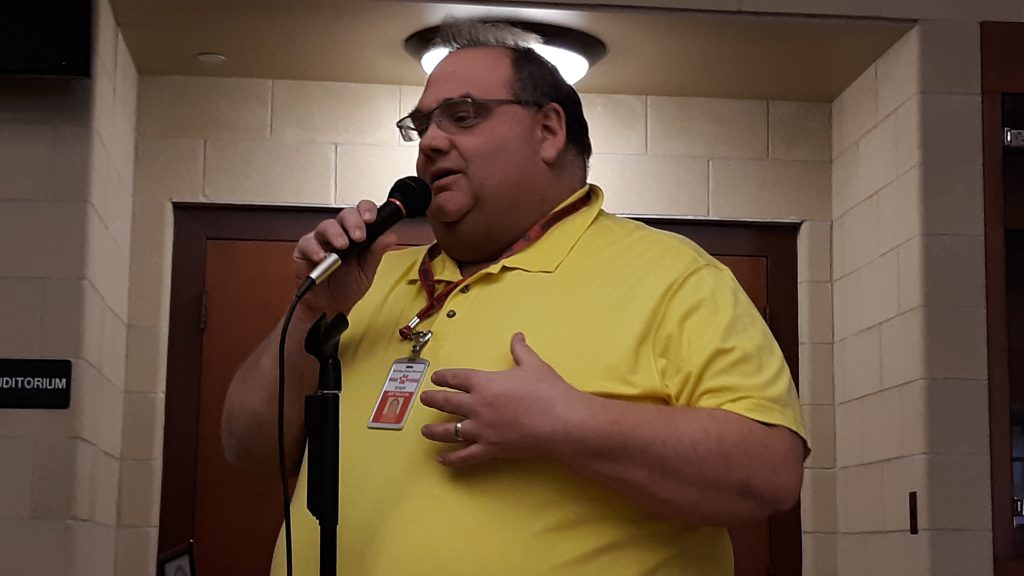
Jodi Anderson, secondary curriculum coordinator for BG schools, said the district needs to use correct terminology and call the proposal a community school – not a consolidated school.
“As long as that term is used, that negative connotation exists,” Anderson said of consolidation.
Conneaut Principal Jim Lang agreed on the new terminology.
“Do we have one community or three in Bowling Green,” he asked.
The board talked about the mixed messages sent by the facilities task force’s votes based on the members’ opinions and the votes based on their prediction of the community’s support. The task force members present offered to reconvene to take one final vote so the recommendation would be definite. But in the end, it was decided that wasn’t necessary.
Board member Bill Clifford said a consolidated elementary is the most economical and most educationally advanced model.
“The question is – will the taxpayers support it in November,” he asked.
“I really do struggle putting anything on the ballot that has a better chance of failing than succeeding,” Clifford said.
“I don’t think Bowling Green can handle another failure,” he said.
Carr shared those concerns, but also said she was swayed by the passionate comments from task force members at Tuesday’s meeting.
“We got beat up through the process,” of the last two elections, Carr said.
Stewart agreed.
“We’ve been beat up so badly,” she said. Yet the single community elementary plan is the best for kids, she added. But will the voters agree?
“It’s a huge, huge decision,” Stewart said.
Walker also said he believes one elementary is the best route for the district and students. But he talked about the last loss of the bond issue – which failed by a greater margin than the first time around.
Walker said he still regrets that decision to repeat the same issue on the ballot.
“I wasn’t doing my job listening to the community,” he said.
But Geer said this ballot issue is not the same. It’s for far less money, over a shorter period, and does not rely strictly on property taxes.
“It is different. It’s quite different,” he said. “I think it will pass.”

Not only is one school a better educational model, but it is also more fiscally responsible, said Wayne Colvin, a member of both task forces.
“That’s the worst use of taxpayer money,” he said of having three schools, noting the added expense of three kitchens, three boilers, three air conditioners, and three roofs.
“We need to look at what is fiscally responsible and what is educationally responsible,” Colvin said.
Ben Otley, a member of the finance task force, talked about the school building issue as potentially the biggest economic development issue in Bowling Green. School facilities can do a lot to attract or discourage new residents from moving to a community.
“One of the first things they are going to look at is the school,” he said.
But it’s more than that, Otley said. He talked about one of his daughters having to work with a teacher at Conneaut Elementary in a room that was used as the custodian closet when Otley attended the school decades before.
“This is for the kids,” he said.
Otley also stressed that this bond issue is very different than the previous two that failed.
“It’s a much different issue you’re going to be presenting to the voters,” he said.

Melanie Stretchbery urged the board to make a decision, since the deadline to get an issue on the fall ballot was nearing.
“I respect the board for your lengthy process,” she said. “But time is running out.”
And she promised support in promoting the issue to voters.
“We will work with the board to support whatever issue is on the ballot,” Stretchbery said.
Frances Brent, a member of the facilities task force, expressed relief that the audience at Tuesday’s meeting was encouraging the board to take the right action for students.
“At last my community has come together,” she said.
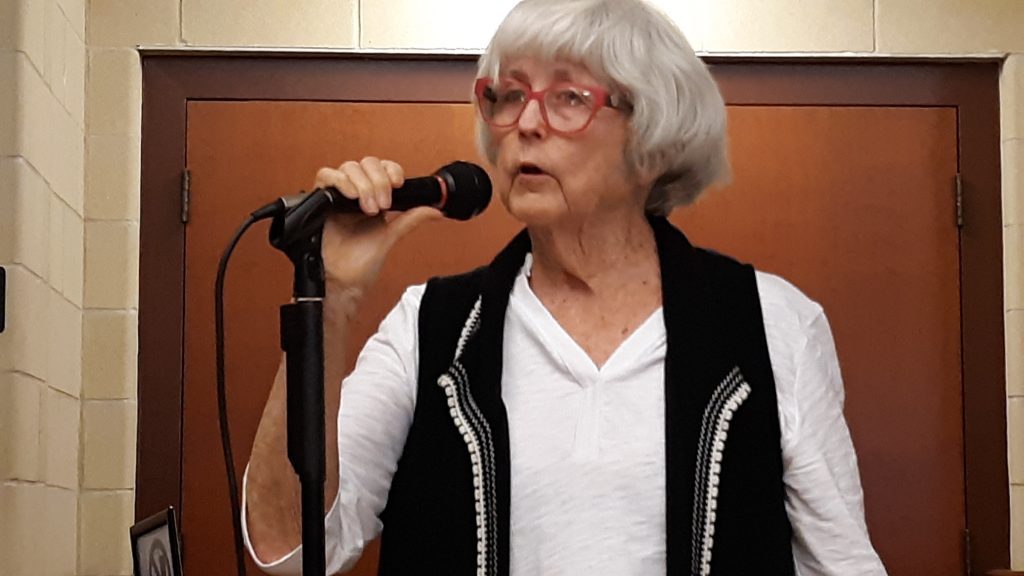
Board president Ginny Stewart agreed the board needed to make a decision.
“It’s costing the community money. It’s causing emotional stress,” she said of delays.
David Conley, the district’s financial consultant, praised the board for working so hard to find a solution.
“You have spent more time than any other district to work through an issue,” said Conley, who has worked with 126 school districts in Ohio.
After listening to the superintendent and staff, David Codding said the issue seems clear.
“This is what’s best for the kids,” he said of the single community elementary. “It’s the right decision.”
But Stewart told the crowd at Tuesday’s meeting that the board cannot pass this bond issue on its own. She said the last time around, there was a “skeleton crew” working on the campaign.
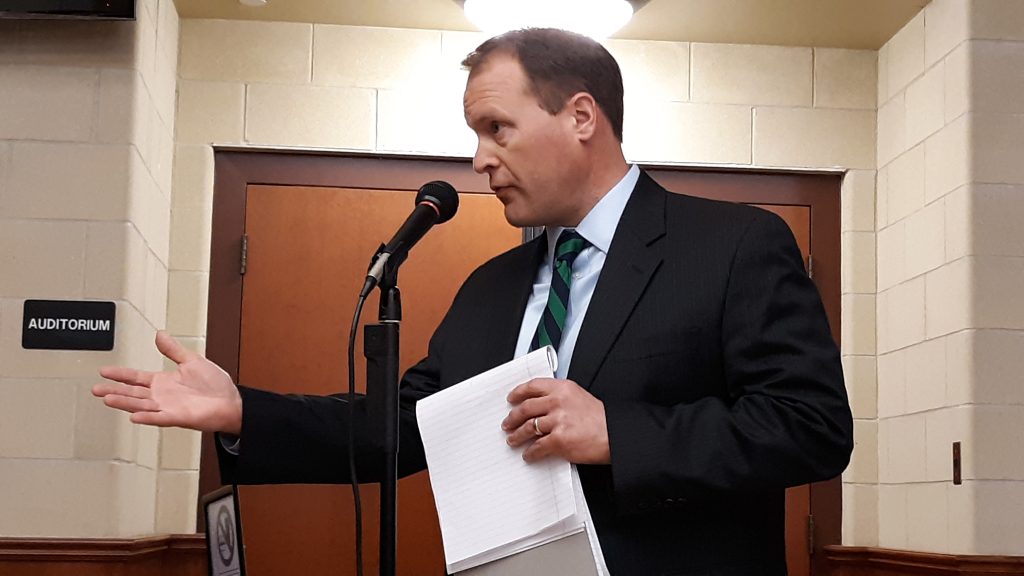
Otley stood in front of the audience and asked for help – with several hands shooting into the air.
“We are deeply committed and personally invested,” he said of the task force members. “I believe you’re not alone this time.”
After the meeting, Stewart expressed her appreciation to those willing to help.
“It shows me we are not alone in this process,” Stewart said. “I’m relieved to see it.”
And unlike previous board meetings, when the board has encountered criticism for its building plans, the audience on Tuesday expressed their thanks.
“It’s time for the community to stand up and say thank you,” Rieman said to the board, resulting in another standing ovation.



